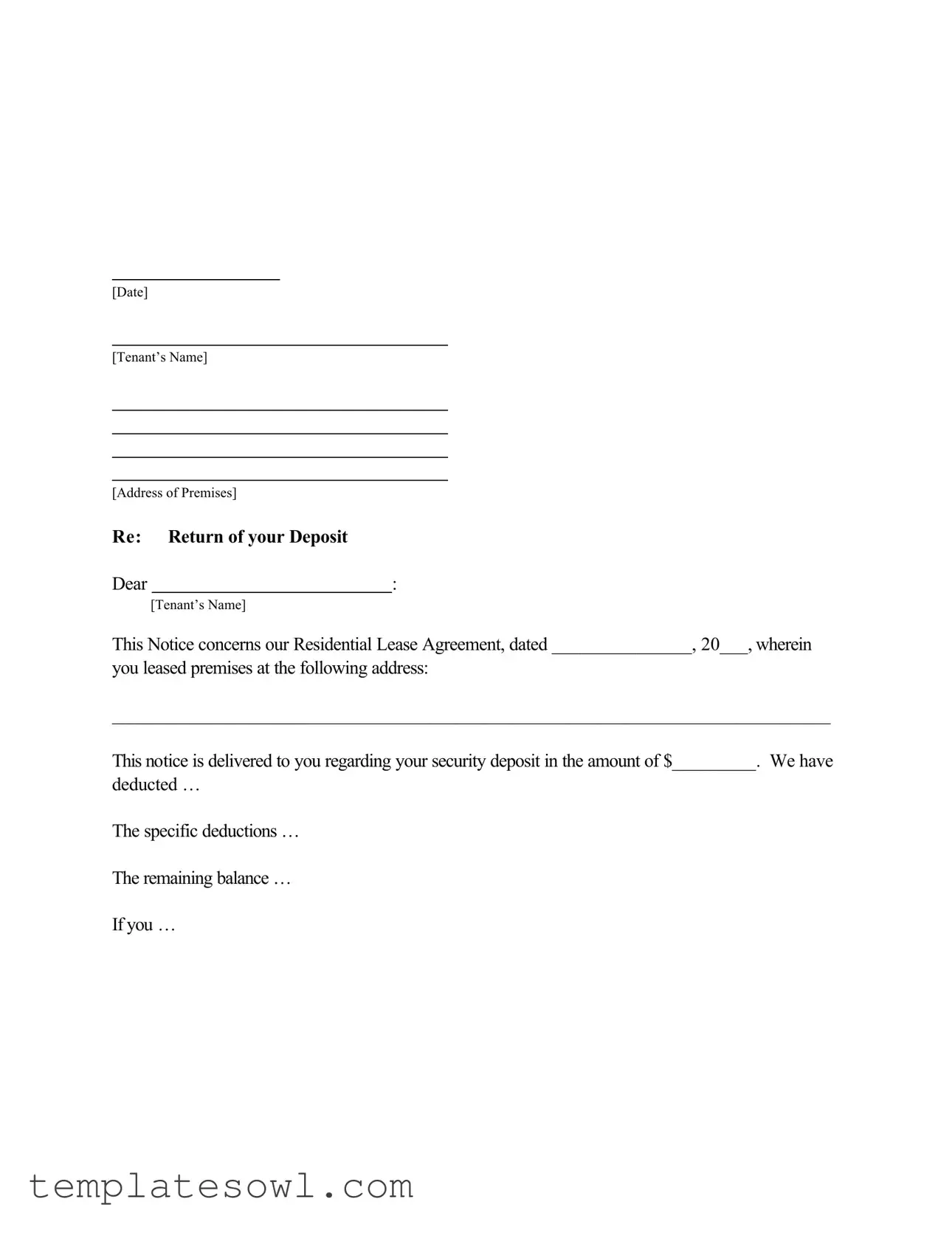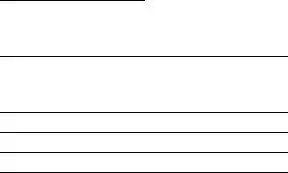What is the purpose of the Letter Refund Of Security Deposit form?
This form serves as a formal communication to tenants regarding the status of their security deposit after they vacate a rented property. It outlines any deductions made from the deposit and indicates the remaining balance that will be refunded to the tenant.
What information is included in the letter?
The letter typically includes the date, tenant’s name, address of the leased premises, details of the residential lease agreement, the total amount of the security deposit, a list of specific deductions made, and the remaining balance. This ensures the tenant understands the calculations involved in determining their refund.
When should this letter be sent?
The letter should be sent promptly after the tenant moves out and any necessary property inspections have been completed. It's important to provide this notification within the timeframe established by local laws or the lease agreement to avoid potential disputes.
What deductions can be made from the security deposit?
Deductions can range from repairs for damages beyond normal wear and tear to unpaid rent, cleaning costs, and any other agreed-upon charges outlined in the lease agreement. Clearly specifying these deductions in the letter is essential for transparency.
What happens if there are no deductions?
If there are no deductions from the security deposit, the letter should state the full amount that will be refunded to the tenant. Clarity about the process helps maintain a good landlord-tenant relationship.
How should the remaining balance be refunded?
The remaining balance of the security deposit should typically be refunded via check, although electronic transfers may be permissible depending on the agreement. The method of refund should be communicated to the tenant in the letter.
Can a landlord keep part of the deposit without explanation?
No, landlords are generally required by law to provide an itemized list of deductions and the reasons for them. Transparency in the refund process helps protect both parties and can prevent disputes over the withheld amount.
What should a tenant do if they disagree with the deductions?
If a tenant disagrees with the deductions outlined in the letter, they should first discuss the issue directly with the landlord. If a resolution cannot be reached, tenants may seek mediation or legal advice to understand their options for dispute resolution.
Is there a specific format that has to be followed for the letter?
The letter should follow a professional format that includes all necessary details mentioned earlier. While there may not be a strict format mandated by law, clarity and professionalism are key in these communications.
What legal obligations do landlords have regarding security deposit refunds?
Landlords are obligated to return the remaining security deposit within a certain period after the lease ends, as stipulated by state laws. They must also provide a detailed account of any deductions. Failing to comply with these requirements can lead to legal consequences.

